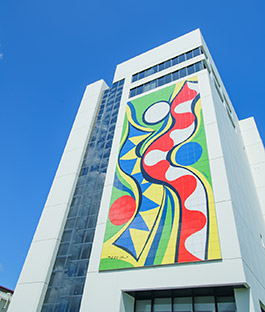What are the symptoms of PAD?
PAD is difficult to diagnose
The blood vessel changes that lead to PAD progress slowly and often go unnoticed. It is said to be quite difficult to notice any abnormalities in the early stages of the disease, since the symptoms are indistinct, such as a feeling of coldness or mild numbness, or pain in the feet and legs while walking that goes away after resting for a short time. Because of this, it is not uncommon to be diagnosed with PAD after the symptoms have become relatively severe.
PAD needs to be discovered and treated as early as possible in order to avoid a progression of the disease to the point that it makes day-to-day life difficult.
The Fontaine classification
Symptoms that arise when PAD has developed in the feet and legs can be divided roughly into the following four stages according to severity (Table 1):
Table 1 Fontaine classification
| Stage Ⅰ | Cold feet/legs, numbness in the feet/legs, and pale skin on the feet/legs |
|---|---|
| Stage Ⅱ | Pain in the feet/legs after walking a short distance, making it impossible to continue walking, but after resting for a short while walking can be resumed (intermittent claudication) |
| Stage Ⅲ | Pain in the feet/legs even when at rest |
| Stage Ⅳ | Skin sores on the feet/legs (ulcers) and necrosis |
Even small signs should not be ignored
There are other symptoms suggestive of PAD besides those given in the Fontaine classification (Table 2).
Table 2 Symptoms suggestive of PAD
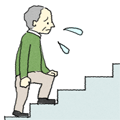
Feet/legs feel heavy and are difficult to lift when climbing stairs

Limbs feel very cold in the morning and evening
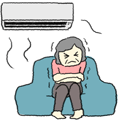
Coldness in the limbs to the extent that it is difficult to bear, creating a dislike of air conditioning in the summer
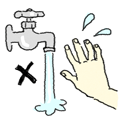
Tap water feels too cold to touch
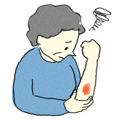
Slight injuries and bruises do not heal easily
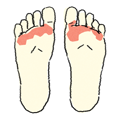
Presence of stubborn athlete's foot
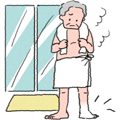
Conspicuous paleness in the areas with poor blood flow upon getting out of the shower/bath
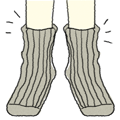
Have to always wear thick socks
Also, it becomes difficult for the body to get nutrients to muscles in the areas with poor blood flow, which may then become leaner. Care is especially needed if the fingers or toes become leaner and weight is lost from the insteps (the part of the foot between the ball and the ankle).
PAD self-diagnosis checklist
Intermittent claudication is a symptom frequently seen in PAD patients. The condition needs to be treated before it progresses to a severe stage. Use the self-diagnosis checklist below to see if you have intermittent claudication.
All of the following conditions must be met to make a diagnosis of intermittent claudication:
"Yes" to (1), (3), (4), and (5)
"No" to (2) and (6)
Stop or slacken pace for (7)
Usually relieved within 10 minutes for (8)
Source: Rose, G.A., et al.: Bulletin of the World Health Organization,
1962; 27(6), 645-584 (partially revised)




